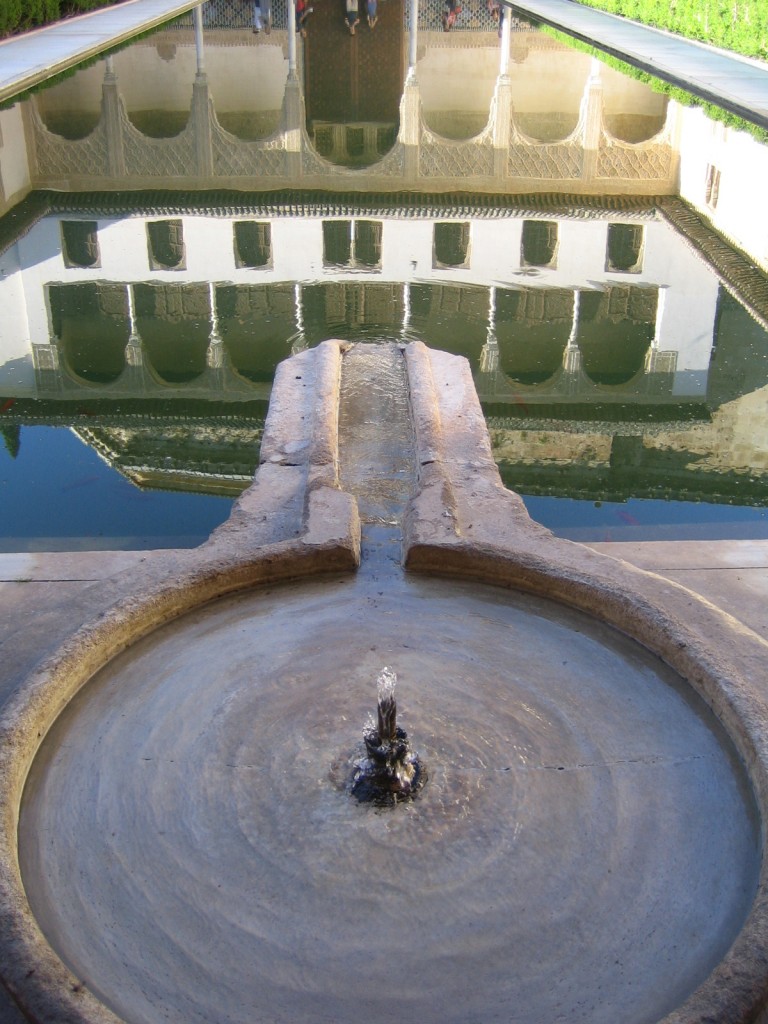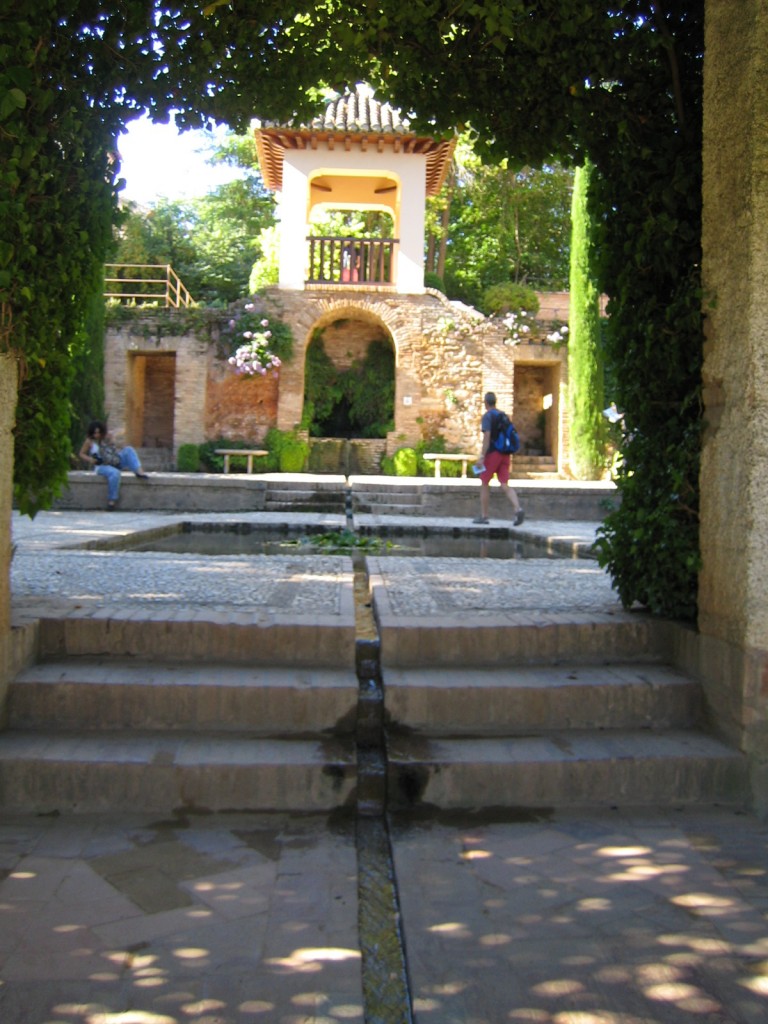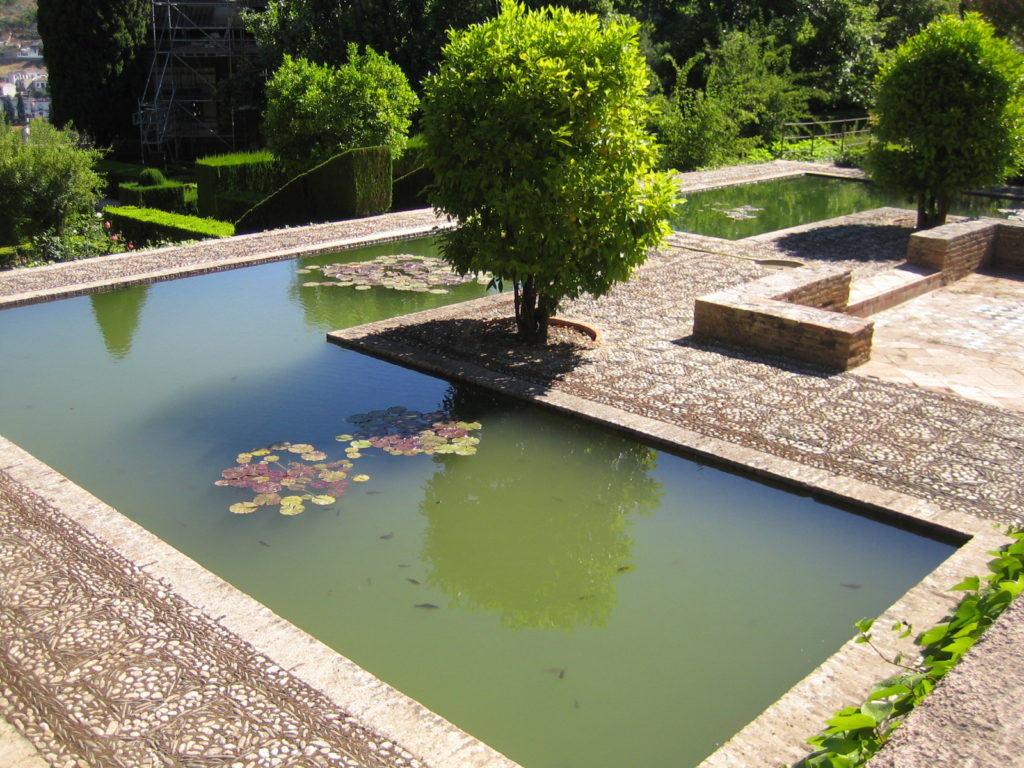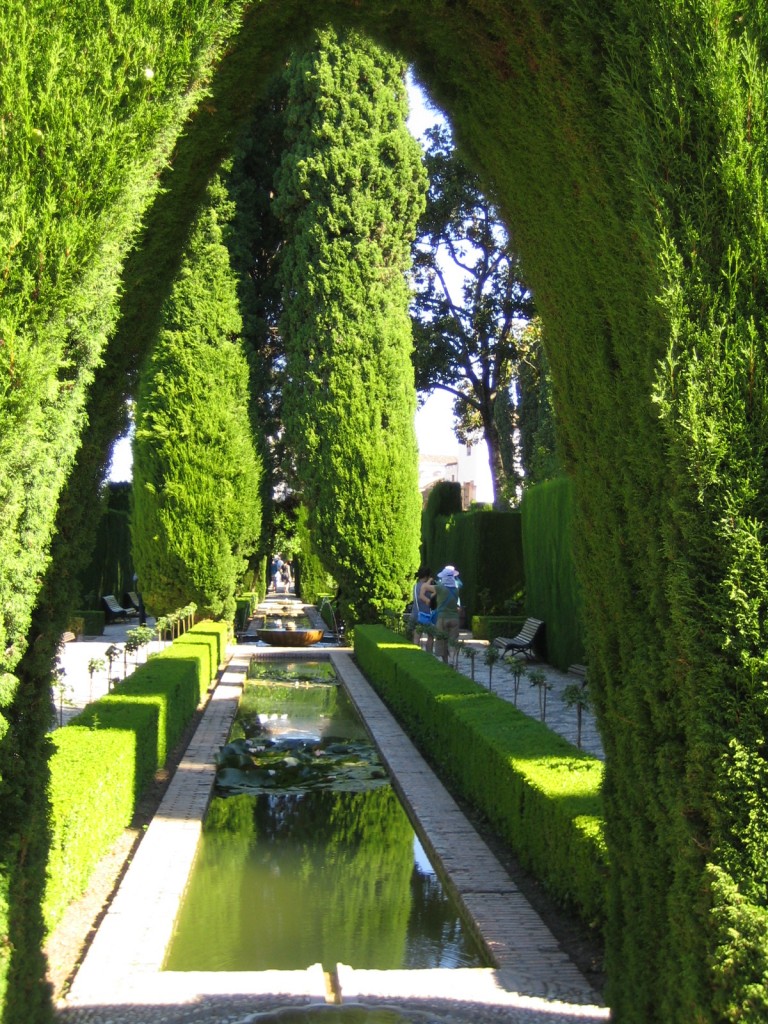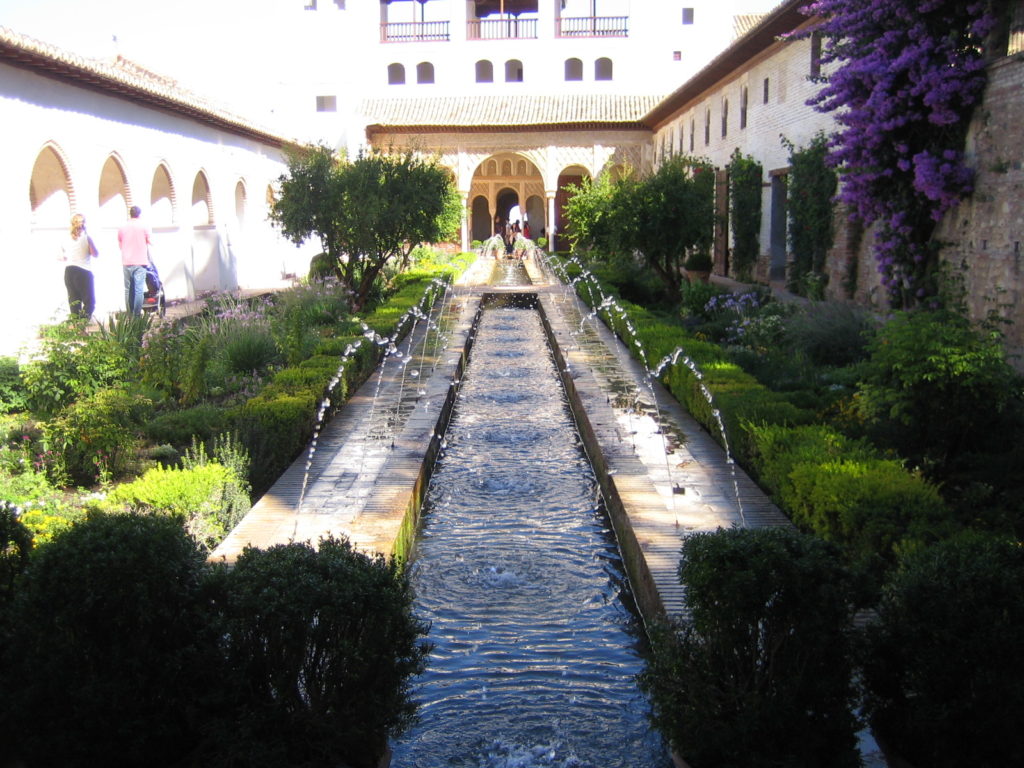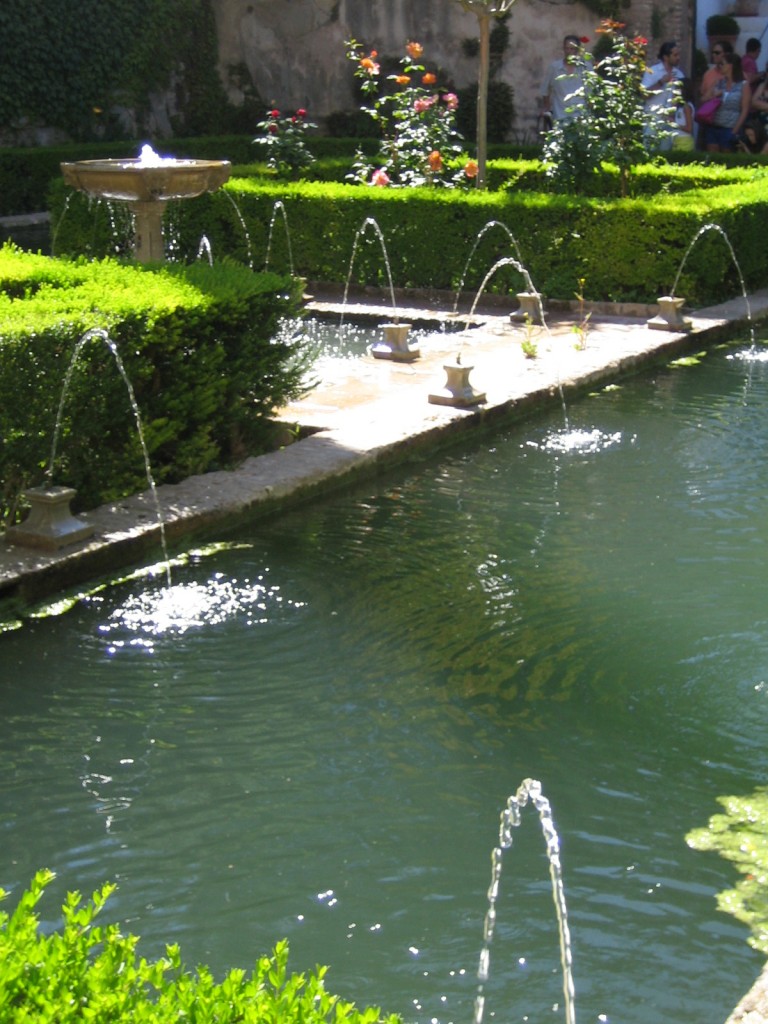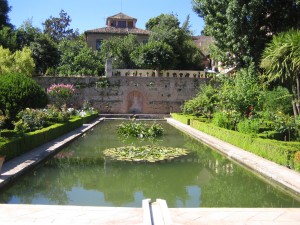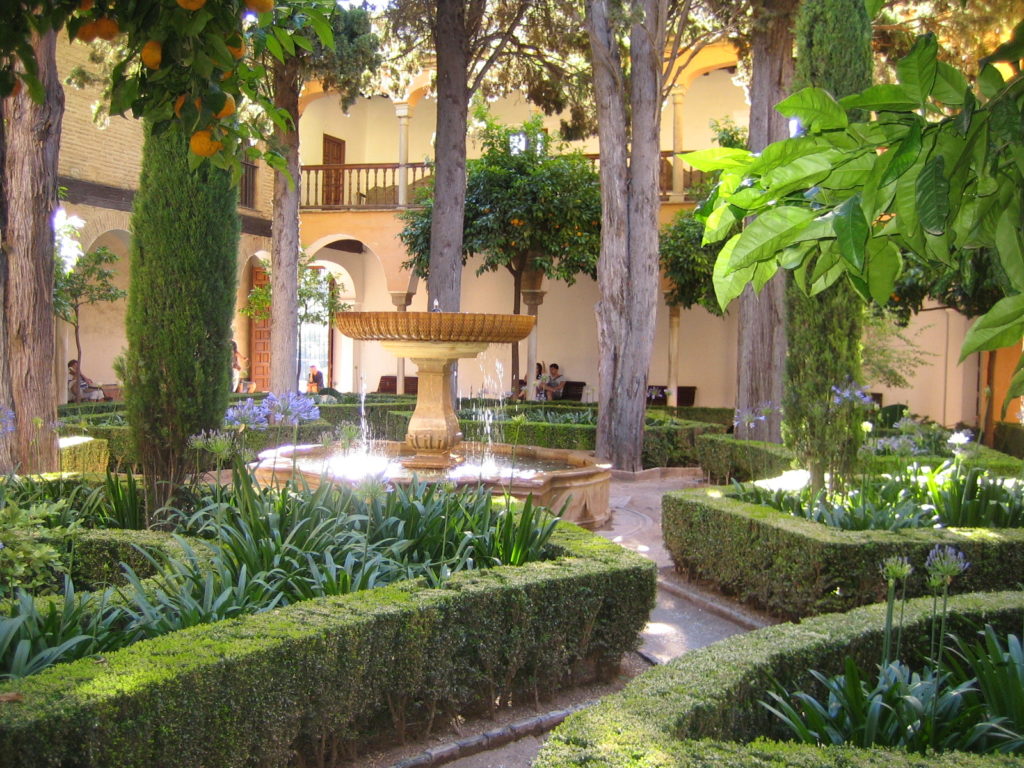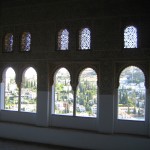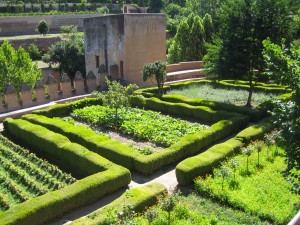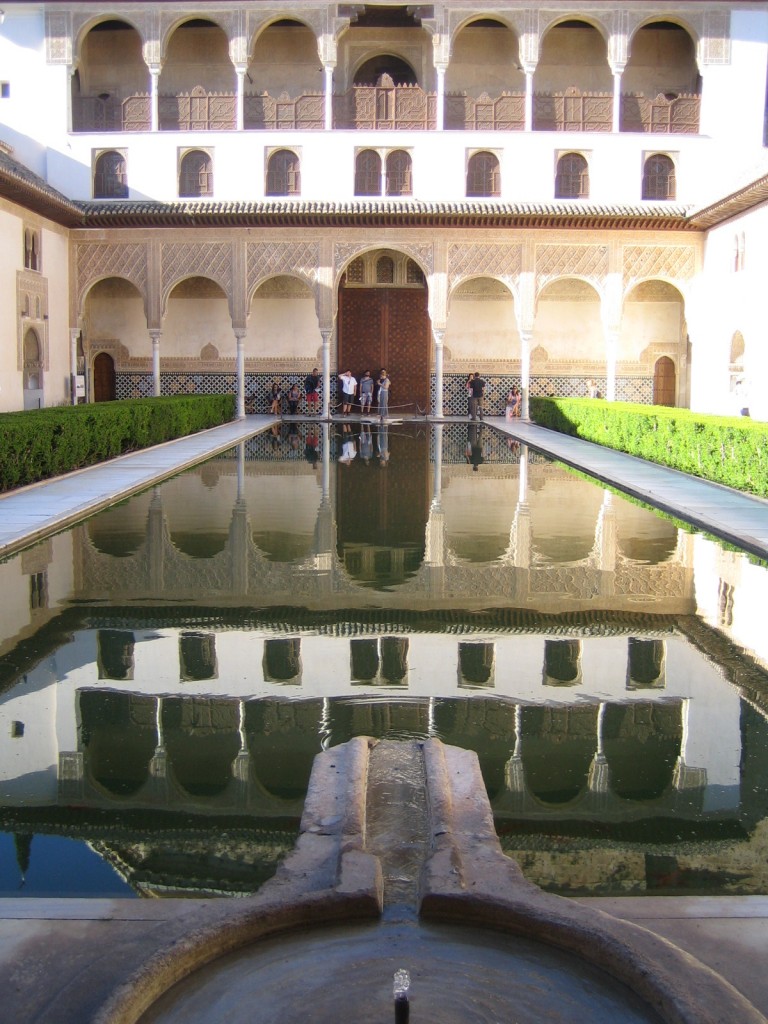 In 1989 I was blown away by a visit to the Alhambra. The scale of the vision and achievement, the huge variety of spaces and the subtlety and grandeur of the design was almost overwhelming. For several years it had a pervasive effect on my design thinking, both overtly and in less obvious ways.
In 1989 I was blown away by a visit to the Alhambra. The scale of the vision and achievement, the huge variety of spaces and the subtlety and grandeur of the design was almost overwhelming. For several years it had a pervasive effect on my design thinking, both overtly and in less obvious ways.
After twenty-five years, Vicky and I decided to make a return visit this summer, this time with three (almost) grown-up children in tow. The experience didn’t disappoint.
I am sure many of you have been to The Alhambra/Generalife complex; I also don’t wish to sound like a travelogue. This is a departure for this blogspace, but the gardens are so remarkable, I felt compelled to share at the very least some pictures and (for those who can be bothered to read) a few ramblings. The Alhambra has been a constant influence on garden design and thinking in the last century and a half.
Part of this is due to its scale – it is a vast complex of gardens and thus the achievement is that much more impressive. The gardens probably represented the pinnacle of Arabic garden design – they incorporated the earlier influences of Persia and the Mesopotamian gardens, but escaped the overblown grandeur of some of the later gardens. I guess this is partly because they were designed for private rather than public use. However, their pervasive influence is also a matter of historical timing. They were conceived and implemented at the height of Arabic expansion into southern Europe. After the 1500s, the Moors were driven back into north Africa, but much of their thinking and many of their craftsmen remained in Europe. The influence was particularly noticeable in garden design. Whereas renaissance architecture has a clear lineage from the ancient Greeks and Romans, Garden design from the period is more identifiably descended from Arabic and Middle Eastern design. This classical layout of rills, fountains, trees and parterres continued to be the dominant force in European garden design until the mould was broken by the English Landscape movement in the late C18th. The roots were later rediscovered through the writings of travellers through southern Europe, such as Washington Irving and the Spanish-Arabic style became very influential again in the early twentieth century in the UK (through the Edwardian garden designers such as Lutyens/Jekyll) and US (particularly on the newly moneyed West Coast).
For me though, they capture something of the essence of what a garden is. Firstly, they are an escape; built in a retreat from the sound and bustle of Granada and the heat of the streets, the complex occupies a strategic hilltop. In virtually all cultures Paradise is a garden, and these get about as close as any I have seen. The sense of escape and retreat from the bustle of life is palpable. Secondly, they maximise the site. They take advantage of the hilltop position, funnelling the cooler air through the gardens.
The spectacular views are carefully managed. Glimpses are given here and there, only occasionally opening up into broader panoramas. The designs are artful in how they manage serial spaces. courtyards, terraces and walkways link one to another in a delightful and often surprising way. One is never bored and unlike some of the great French classical gardens, the whole design is rarely revealed. The hilltop location dictates some complex geometry, so axes kink and turn in a way that makes the design less predictable than one expects. Perhaps the most important feature however is the way in which the gardens perfectly weave together the essence of what a garden is.
Although these are very sophisticated designs, the origins from kitchen gardens is clear, with fruit trees abounding and the parterres as constant reminders of herb and vegetable beds. All gardens need limits – it is one of the things that defines a garden (see my blog on the subject from a couple of years ago: When is a garden designer a landscape designer? Indeed, when is a garden a landscape – or vice-versa?). Here the walls and boundaries are an integral part of the thinking: the enclosed nature of the spaces is the essence of the design. But the users of the garden are never allowed to forget the surrounding environs: the large trees echo the wooded hills and provide a pleasant balance to the symmetrical formality of the layout; the frequent glimpses of the surrounding hills and valleys means that one is constantly aware of the links with the broader landscape.
So for me, the gardens at the Alhambra capture that elusive idea of nature captured, of the reflections of a broader landscape. Woven into this are complex aesthetic references along with expressions of learning and cultural identity. Most importantly though, they are just a very pleasant and ever changing place to spend time, as all gardens should be.
If you haven’t already been there, make sure it is at the top of your bucket list this year!
